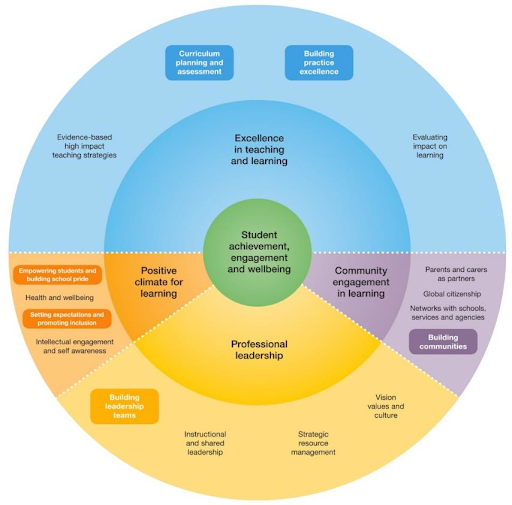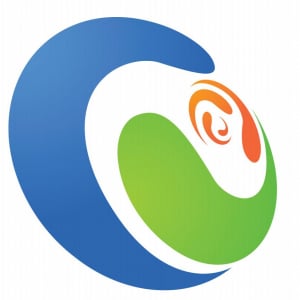Module 2: How to decide what tools to support and what to not support
Landing the Concept
In an increasingly dynamic world, the fundamental business advantage is organizational agility — the ability for individuals, teams and organizations to maintain alignment while continually transforming to meet evolving challenges.
(Stewart Butterfield, CEO And Co-Founder Slack)
As Higher Education Institutions reframe the way they think about the way they work, their stakeholders (researchers, teaching staff and students in the first place) and their workforce, there will be a bigger focus on how to make sure all can be kept engaged, included, and aligned with the evolving ways of working. When institutions were predominantly organised around fixed daily classroom periods and the use of physical classrooms, teachers and students were likely to focus mainly on classroom delivery and study. And teachers have always made the best of whatever they’ve got at hand to work with. But the reverse was equally true: if the school or university did not support a particular technology, teachers and instructors quite understandably did not want to use it. Even if the technology was in place, such as a learning management system or a video production facility, if an instructor was not trained or supported to its use and potential, then it remained underused or not used at all.
Traditionally academic support comprises a wide scale of strategies and modalities:
- Classroom-based: the continuous assessment of student performance and learning needs, and then adaptation of how teachers teach to improve student learning.
- Institution wide: learning labs or other support programs and facilities to support individual needs, practice skills or learn complex concepts. Academic support is based on identified learning needs, and HEIs provide supplemental instruction, practice, and guidance to students who have special needs (learning disabilities, physical disabilities, or developmental disabilities; immigrant students with limited language skills, also financial or emotional and psychosocial needs etc.) The increased attention for student and staff (academic and non-academic) wellbeing is a noticeable trend.
- Academic support may include relationship-based support to encourage better mutual understanding, communication and collaboration between students and academics. Furthermore this can include optional skills based support, language, maths or digital literacy classes are common examples.
- Non-instructional services support educational processes or systems: apprenticeship training programmes, foreign language instruction; training for career development (provided either directly to individuals or through employers); exam preparation tutoring; educational support services (educational consultants, education guidance counselling, educational testing services, student exchange programmes, etc.)
- Off campus: before- or after-class programs, community groups and volunteer-based learning programs, which provide students with tutoring or mentoring, or that help students prepare for classes or acquire study skills, for example.
- Outside of term: summer school or bridge programs to help students catch up or prepare for the next grade.
- Technology-based: HEIs increasingly use digital and online learning applications, such as VLEs, PLEs, MOOCs, AR/VR, virtual classrooms, lecture capture, visual simulations or game-based learning, to help students grasp difficult concepts. Teachers and admins use learner- and learning-management programs that allow them to archive course materials as well as manage and communicate with students online.

From “Student Support Services Handbook, Victoria State Government”
None of the above is more or less important than the other, but the balance between them and the responsibility for their implementation within each institution may vary. Largely speaking, while the students have a responsibility for requesting support services, the administrators, teachers, counsellors, and other staff members assume responsibility for providing the academic support students need to succeed regardless of whether students request additional support.
Traditional student support services are well established today. The present major management challenge is how to approach a systemic support for the technological evolution in teaching, learning and working in HEIs. Nowadays all higher education institutions have introduced AV/media and information and communication technology for teaching and learning on a large scale: teaching and learning does no longer happen exclusively in classrooms and labs but increasingly within a virtual and even at times personal learning environment. HEIs recognise the need for professional support for faculty and students but also recognise that providing such support may be demanding and an almost impossible task due to the rapid technological evolution and the increasing demands on expert support staff. (Optional: in case you are particularly interested to get an idea on how AI may demand new skills from academic staff and new professional capacity from technical staff in a learning organisation you can read “Artificial Intelligence for Learning: How to use AI to Support Employee Development” by Donald Clark.) The range and diversity of tools and services used in HEI is almost endless: have a look at Jane Hart’s Top Tools for Learning 2021 to get an impression of what teachers and learners are using nowadays.
HEIs are responding in many ways to the challenges posed by technological evolutions. HEIs provide instructional designers, media designers and IT support staff to support teaching and learning. Some institutions also provide funding for the development of innovative teaching projects. A major implication of using technology is the need to reorganise and restructure the teaching and technology support services in order to exploit and use the technology efficiently. Too often technology is merely added on to an existing structure and way of doing things. Reorganisation and restructuring is disruptive and costly in the short-term, but usually essential for successful implementation of technology-based teaching (see Bates and Sangrà, 2011).
It is increasingly difficult given the inertia of HEIs and the abundance of new technologies that can be used in teaching and learning to select those technologies that can be introduced with minimal organisational change and maximum impact on learning at the same time. This may require difficult organisational challenges and they may be the cause of delayed or slow implementation of new technologies. Moreover, the current Covid-19 pandemic has disrupted educational systems and demonstrated how there is an increased need to provide teaching and learning support systems that are rapidly deployed, scalable, cost effective for all parties and ideally responding to individual students’ learning needs and styles, supporting remote and isolated learners and mitigating challenges caused by disruptions in the learning and working process: read this blog post on how the pandemic affects our way of working in general. Have a look at how the University of Toronto uses its Academic Toolbox to add new capabilities to the system, including access to external course content, additional grading or assignment capabilities, or new ways to interact with and between students.
Optional: if you are interested in this issue, watch this presentation by Michel Beerens (NewMediaCentre, Delft University of Technology, The Netherlands) from 31’00” till 51’00”. Michel Beerens talks about the institutional challenges of technology support.
Furthermore, there is a significant level of discussion underway on the roles of support services who have as one of their primary roles, that of supporting a move towards more innovative teaching and learning practices supported by technology. These services often mix technical support and pedagogical innovation in their mandates. Some have more of a technical service profile but with significant activities supporting pedagogical innovation, others come more from the pedagogical research side but who also offer technical support services. Their names include educational technology departments, learning centres, audio-visual services, innovation centres and centres for teaching and learning. Read this blog post by Alexandra Mihai on teaching and learning support where she examines the changing role of these types of centres . read also this article by Laura Czerniewicz entitled ‘Changing Centres for Teaching and Learning: an analytical review’. This analytical review reflects on the ways that centres for teaching and learning in universities are formulated and how they might change to best respond to and address the changing needs of students, academics and institutions in a post pandemic era.
Take Action!
Try to answer the following questions:
Does your institution have the designated tools and documentation to help empower all staff and students to use the tools that are necessary, recommended and/or required by the HEI? Can you create a mind map, organogram or block diagram of the support services landscape? Does it already exist and is it kept up to date?
Can you describe clearly where in your institution the responsibility for a particular support service is located and how the different levels of support (centralised, faculty, personal) are working together to deliver the right support at the right place and time?
Is your institution listening to the needs of staff and students and giving them the flexibility they demand? What channels/methods exist? How are they monitored and how does the institution warrant their follow up and impact?
Does your institution have a transparent system whereby staff and students can request and justify the need for additional services and support?
How is training in the use of existing and new services organised in your institution? Are teaching and other staff recognised in some way when they have achieved a certain level of proficiency in a specific tool or service?
Use Jane Hart’s Top Tools for Learning 2021 and ask colleagues, teachers and students in your HEI whether they use tools and services for working, teaching and learning from this list, and whether all the tools they use are included in the list? Afterwards, go to your support services (student support services, ICT services, AV and media services, learning design services…) and ask them which services and tools from the list they support, and to what extent.
Write and share a blog post on your findings.
Test Yourself
References
- In this video several higher education service providers share their experiences of supporting academic staff through the crisis and coming to terms with what for many is a new role; https://vimeo.com/547666751
- An example of how a commercial product supports good use. https://miro.com/blog/hybrid-collaboration-field-guide/
- https://act.utoronto.ca/toolbox/newtools/how-it-works/ This page helps academics at the University of Toronto recommend new tools for support on its e-learning platform Quercus (which I believe is a branded Canvas installation). It's a good example of an LMS being used as a platform. You can view the ideas that have been submitted for new tools to add as well as those listed as projects and the list of currently supported tools.
- https://hbr.org/2021/07/your-company-needs-a-digital-nomad-policy: how will we manage to continue to support people who can't come into the school or office? It would be short-sighted to pretend these issues will disappear with the end of Covid. These issues are just getting started.
- https://bionicteaching.com/more-looking-at-a-domain-of-ones-own-cpanel/
- Which applications are essential to support one's own learning, which are nice to have, and which are distractions? What features unite them, and what features really stand out?
- https://www.educause.edu/research-and-publications/books/educating-net-generation/support-services-net-generation
- Read how environmental changes have caused the academy to examine its policies, practices, and more importantly, the application of information systems to create more efficient operations and more effective student services.
- https://www.educause.edu/ecar/research-publications/ecar-study-of-community-college-faculty-and-information-technology/2020/technology-support-services-can-benefit-faculty-and-students
- Institutional leaders should increase faculty awareness of available training and support for these services. And increasing participation in and satisfaction with these services will empower faculty to engage with community college students who need the most support to meet their educational goals.
- Mackenzie, W. (2002) Multiple Intelligences and Instructional Technology: A Manual for Every Mind. Eugene, Oregon: ISTE
- Teaching in a Digital Age, Guidelines for designing teaching and learning, A.W. (Tony) Bates, Tony Bates Associates Ltd, Vancouver BC (2015)
- Learning professionals (and others in related areas) are invited to nominate their Top 10 (digital) tools for learning and their contributions are then used to generate the annual list. https://www.toptools4learning.com/
- Managing Technology in Higher Education: Strategies for Transforming Teaching and Learning, A.W. (Tony) Bates and A. Sangrà (Jossey-Bass) 2015
- Image sources
- Student Support Services Handbook, Victoria State Government
